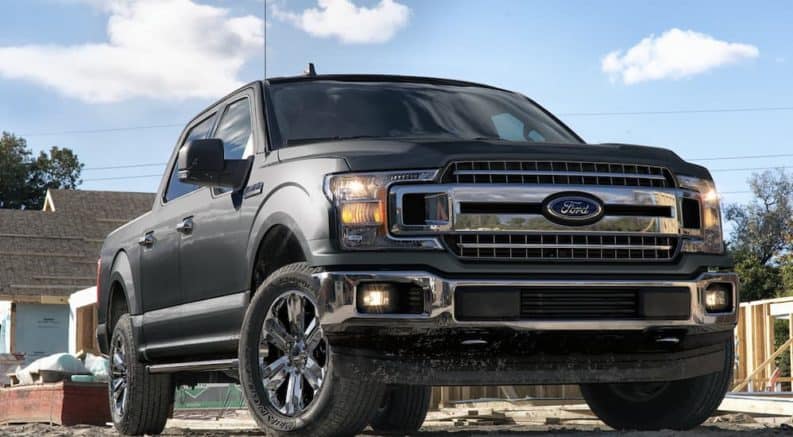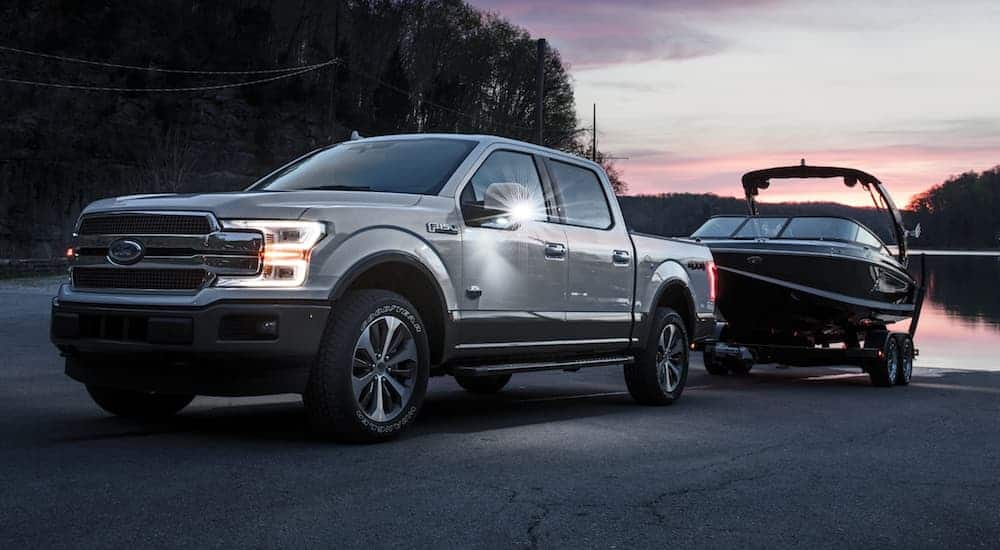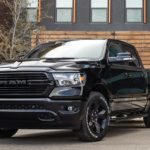Ford is currently in the tail end of its thirteenth generation of the F-150. In production since 2014, most generations last anywhere from four to seven years, so chances are good this might end up being the final year of the current model design. This means if you are someone who absolutely loves the current look of the F-150, you should consider purchasing a 2020 Ford F-150 as the Ford Motor Company will likely release the fourteenth generation either for the 2021 or 2022 model years. For now, though, the current model pushes all the right buttons. There’s a reason why it continues to be the best selling vehicle in the United States.
All The Aluminum Trim
All Ford F-150 trim models are now made with aluminum bodies, which help shed weight off of the pickup. As trucks are not the most aerodynamic vehicles, to boost fuel efficiency, there are only a handful of ways to go about doing this. Naturally, it all begins with the engine. Improving engine performance is where boosting fuel efficiency begins and ends. However, beyond this, it is possible to help improve fuel economy by shedding weight. Of course, shedding weight on a car or SUV is one thing, but shedding weight on a pickup can come with a cost. If the wrong weight is removed, it can affect the frame of the truck, which might cut into how much the truck can tow. This is why maintaining a strong frame while removing hundreds of pounds by moving from steel to military-grade aluminum is key. It cuts out weight without having an impact on towing performance.

With the entry-level Trim, which is the Ford F-150 XL, the MSRP will run $28,495. If you decide to move up and opt for the XLT, the trim begins at $34,510. Then there is the LARIAT, which takes a jump to a starting MSRP of $42,500. If you have had an eye on the King Ranch, which offers new levels of comfort you may not have seen on other pickups before, it will have an MSRP of $52,740. The Platinum MSRP isn’t all that much more than the King Ranch and beings at $55,270.
The Limited trim will have an entry-level MSRP of $67,485. This is technically the top-tier trim. But we can’t mention the Ford F-150 without going into the Raptor. The starting MSRP for the Ford Raptor is $53,205. With that said, due to the limited supply of the Raptor, the eventual price point will likely be higher than this, but if you manage to score one off the lot, you may, in fact, be able to swoop in and pick one up around this price point.
Performance Engines
Beyond going with the aluminum exterior, Ford has also looked toward the smaller, yet powerful engine to help squeeze every drop of gasoline for more fuel efficiency. That is why there are several smaller engines dropped into the hood of the Ford 2020 Ford F-150 that you might not have expected (or that you would not have found in a Ford pickup a few years ago).
The base packages do use a 3.3L V6. Despite the smaller size, the entry-level pickups can push out 290 horsepower and 265 lb-ft of torque. Now, with the smaller V6, you might not be able to get the kind of towing capacity that you’d like, although fuel efficiency is toward the high end, with an estimated 25 miles per gallon on the highway and 19 miles per gallon in the city (for the two-wheel-drive option).
Perhaps that kind of fuel efficiency isn’t even enough for you. You want something with even better fuel economy and better power. Well, when that’s the case, you can spring for the 2.7L Twin Turbo V6. Yes, this engine is smaller than the 3.3, but the twin-turbo design ups the horsepower to 325 and the torque to 400 lb-ft. And at the same time, you’re also boosting the fuel efficiency to 26 miles per gallon on the highway and 20 miles per gallon in the city.
Sometimes though, there’s just no replicating the sound of a V8. The twin-turbo V6 does sound nice, but it just doesn’t have that same deep roar of a V8 dropped under the hood of your pickup. Often this sound alone is enough to make you spring for the larger engine. And even though the fuel efficiency drops, it more than makes up for it in other ways. For starters, it boosts the maximum trailering capacity by 2,000 pounds (the smaller V6 engines allow for around 5,000 pounds while the V8 ups it to 7,000). It’s also important to note all of these engine options can all be had on the XL trim. With the 5.0L V8, you’ll boost the horsepower up to 395 while receiving 400 lb-ft of torque.
On some of the higher-end trims (including the Raptor), there is a 3.5L V6 turbocharged engine that, while smaller than the V8, boosts both the horsepower and torque. Horsepower is pushed to 450, and the torque is 510 lb-ft. The top tier packages also offer the ability to upgrade to a 3.0L Power Stroke V6 Turbo Diesel engine. With the turbo-diesel, your pickup has 250 horsepower and 440 lb-ft of torque.
Safety Is Always A Key Feature
As of late, Ford hasn’t cut corners when it comes to safety features. In fact, what you find on the top-tier trims are often found on the entry-level trims. Outside of a few add-on features, such as built-in turn signal mirrors, most of the tech that’s in one trim will be found on another. This way, you don’t need to pick and choose and decide whether you want to spend more on the safety features or not (you’re more likely to be forced to spend more on certain tech features with GMC and Chevy pickups than with Ford). In fact, the Insurance Institute for Highway Safety has continually rated the Ford F-150 as one of the safest pickups on the road today. Some of the highlighted safety features to keep in mind include lane-departure warning, lane-keep assist, adaptive cruise control, plus automated emergency braking with pedestrian detection.
Check Out The Current F-150 Model While You Can
Ford Rarely keeps an F-150 generation for more than four or five years. The longest it maintained the same generation, you’d need to look back at the tenth generation, which ran from 1997 until 2004. Every other generation lasted for no longer than six years. As the current generation came out in 2015, 2021 will mark the seventh year, so this very well might be the last model year until the all-new upgrade. To remain competitive with other truck manufacturers on the market, Ford likes to keep its pickup fresh, and a fourteenth generation will do just that. So whether you’re shopping around for a new 2020 Ford F-150 or are simply curious how it stacks up with the competition, all the important bits of information are all tucked in right here.





